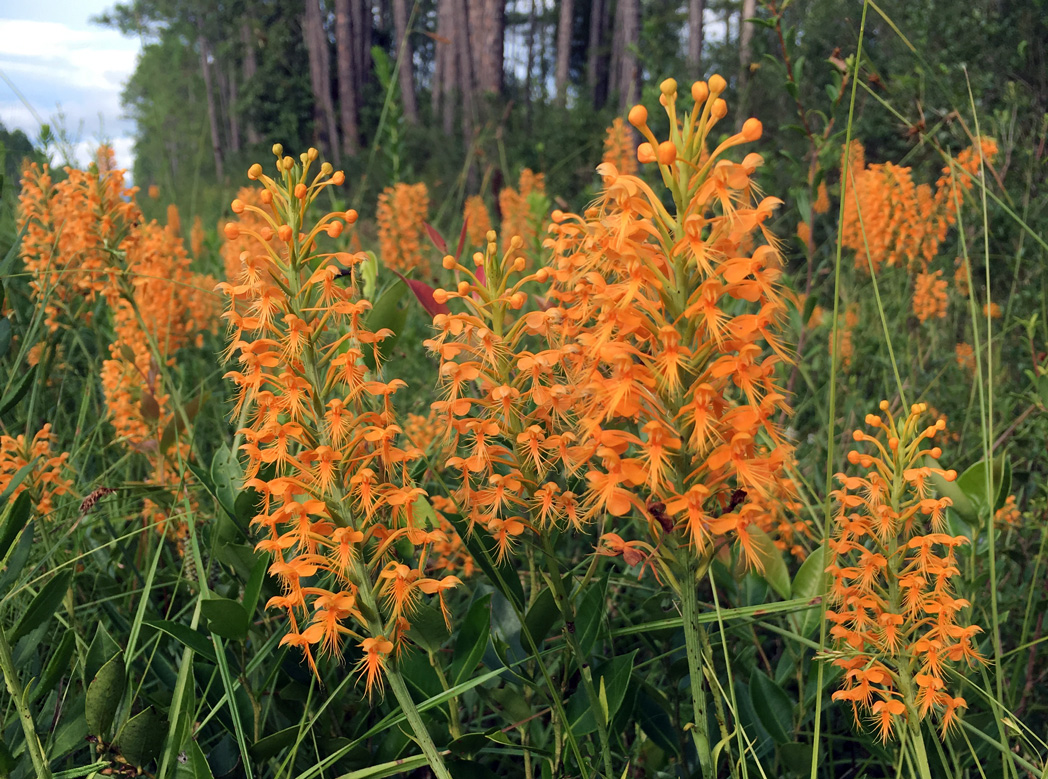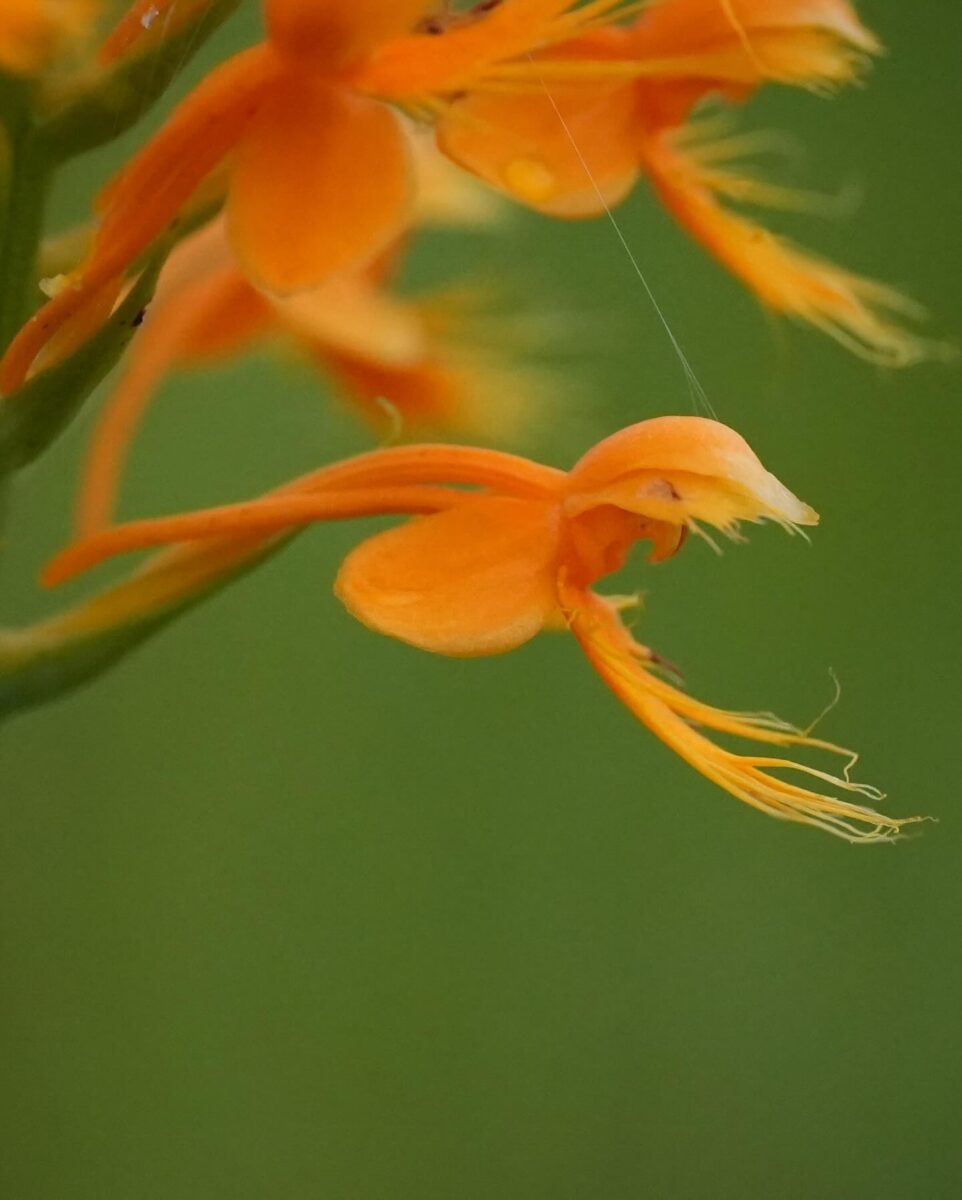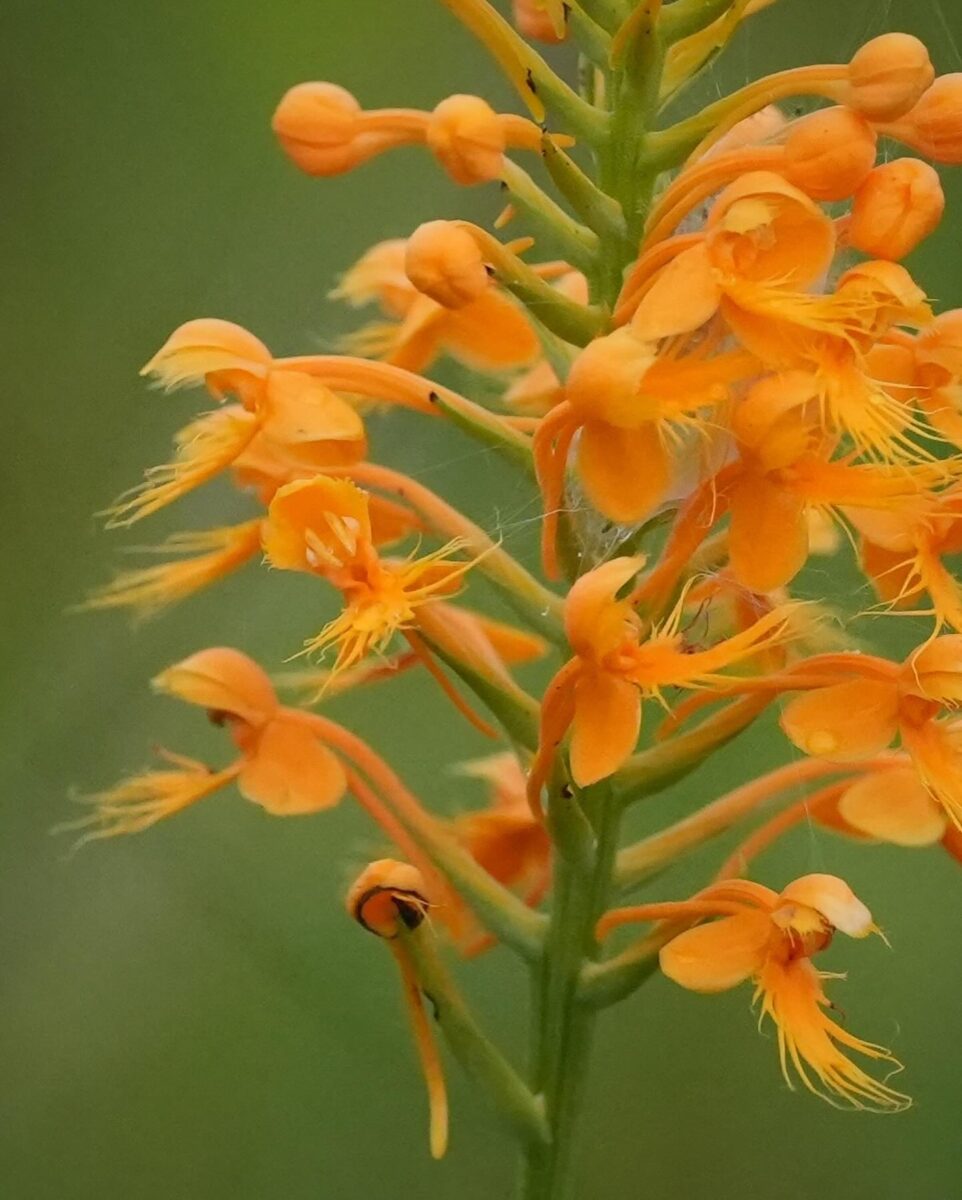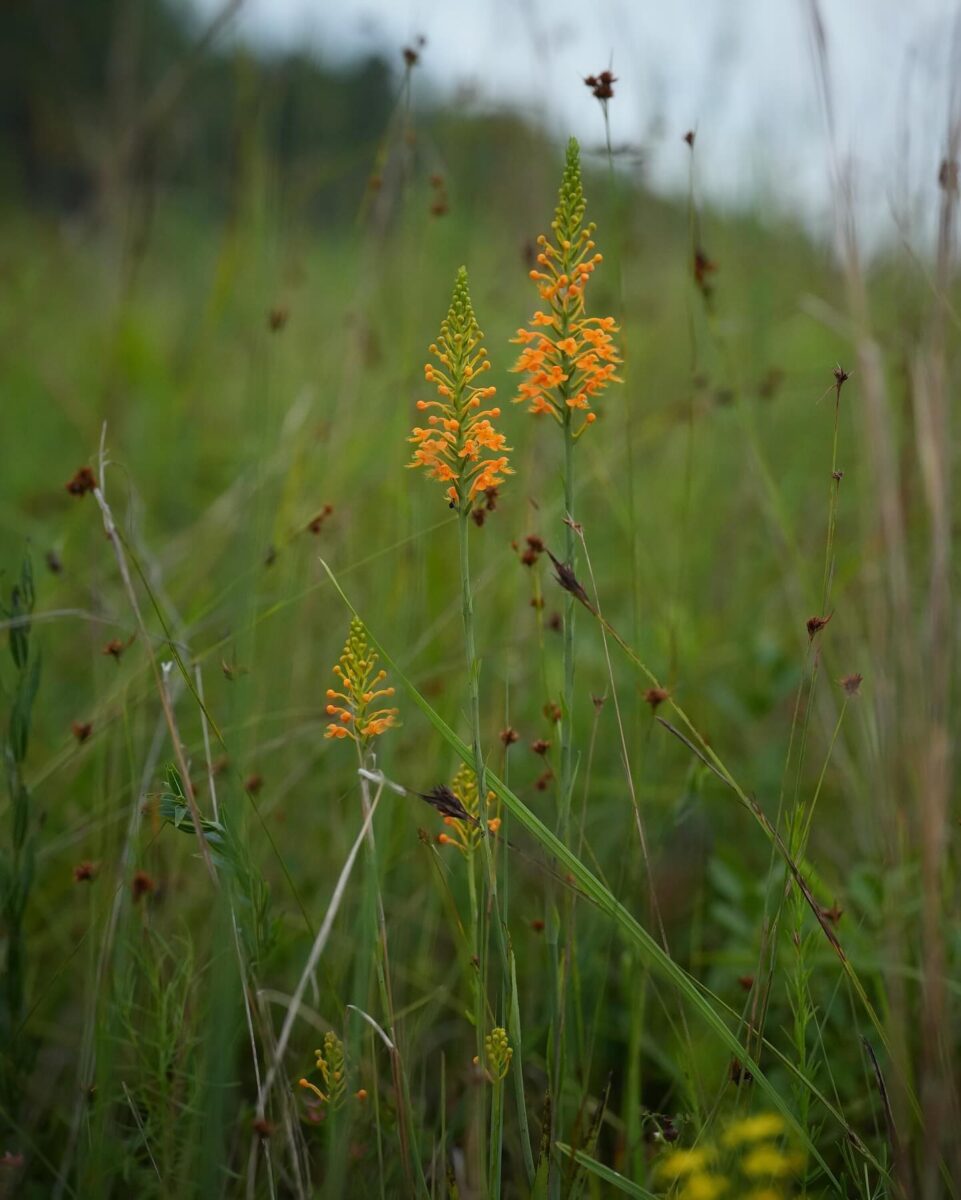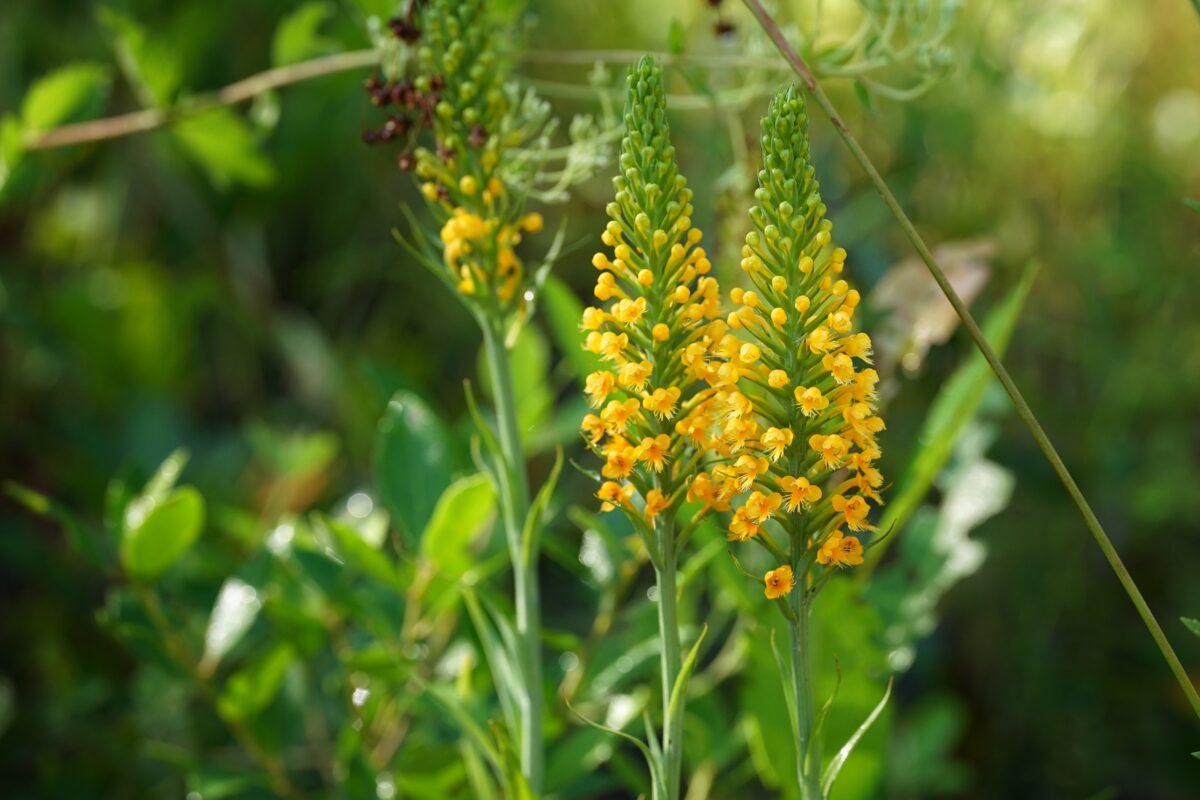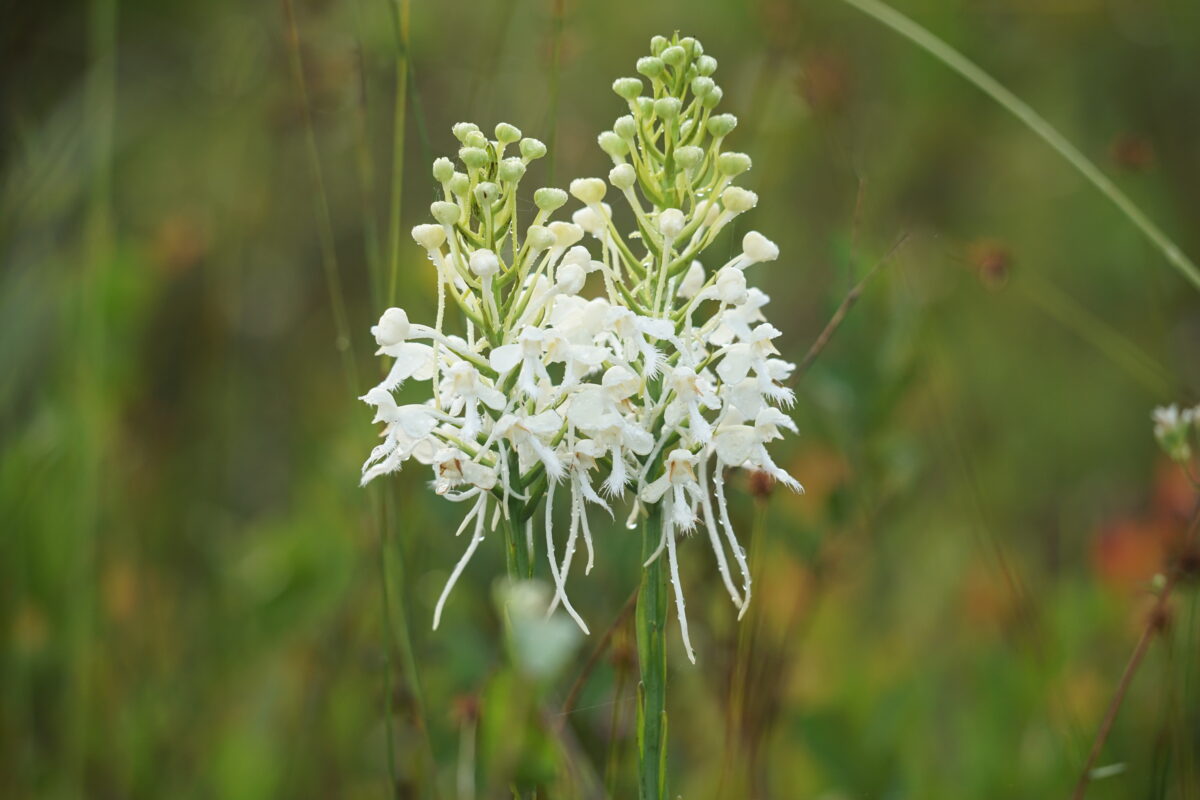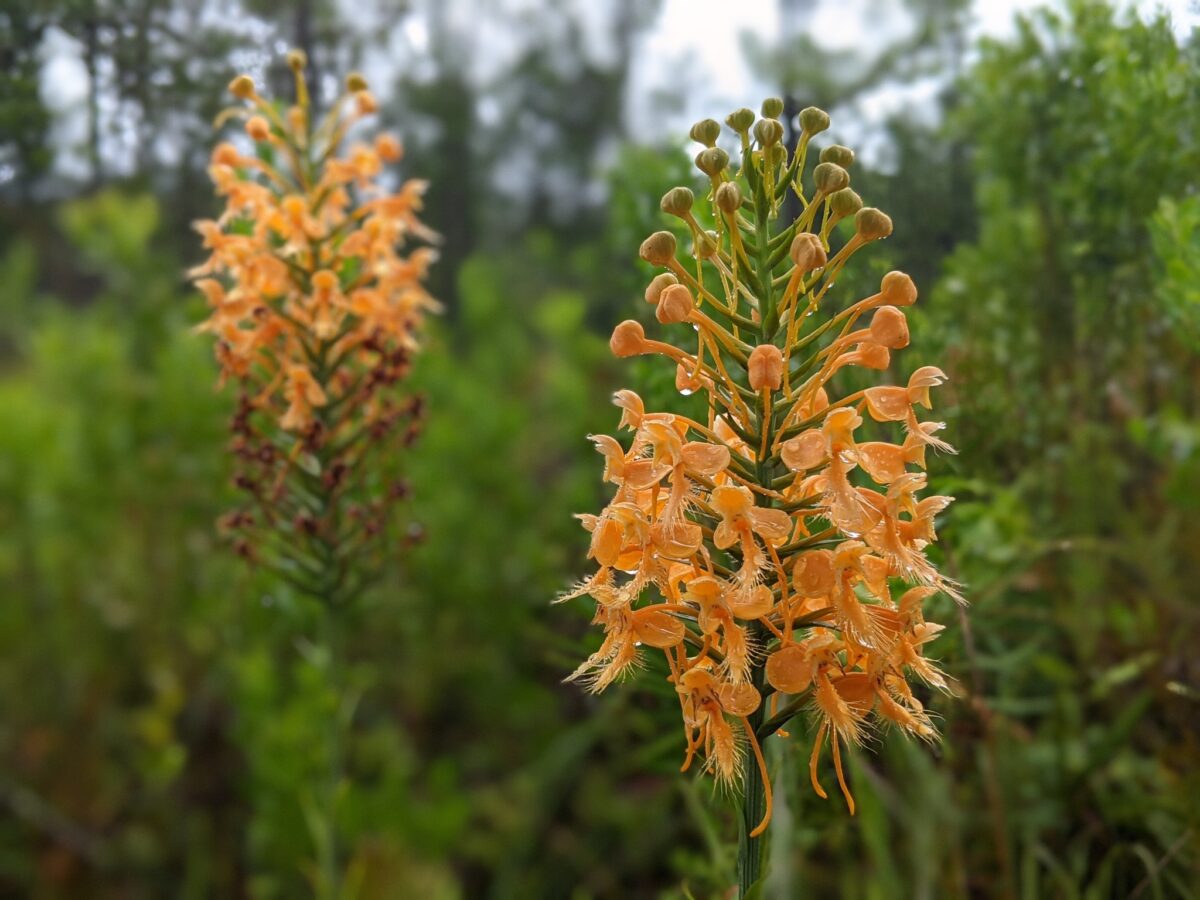Chapman’s fringed orchid
Pictured above: A roadside patch of Chapman’s fringed orchid (Platanthera chapmanii) by Stacey Matrazzo. Click on terms for botanical definitions. View post as a PDF.
Chapman’s fringed orchid (Platanthera chapmanii) is an endangered terrestrial orchid found in wet prairies, pine savannas and along wet roadsides and ditches. Its showy flowers typically bloom in summer and peak in August. Although this species is rare, Chapman’s fringed orchids tend to grow in small colonies resulting in patches of bright color. Butterflies are its primary pollinator and use their long tongues to access the nectar.
The brilliant flowers of Chapman’s fringed orchid are orange to bright yellow with a heavily fringed lower lip. A spur extending behind the lip is filled with nectar. Anthers are split and obvious. Flowers are born in terminal racemes atop stout, rigid stems. Racemes may grow to 5 inches long and contain 50 or more individual flowers. The bright green to bluish-green leaves may be lanceolate, ovoid or triangular and decrease in size as they ascend the stem. The fruit is a capsule.
According to Paul Martin Brown in his book, Wild Orchids of Florida, Chapman’s fringed orchid is on the rarest orchids in the United States, with 90 percent of its population occurring in 12 Florida counties. Many botanists believe Chapman’s fringed orchid is a natural hybrid of Yellow fringed orchid (P. ciliaris) and Crested fringed orchid (P. cristata).
The genus name Platanthera is from the Greek for “broad or wide anther.”
Family: Orchidaceae (Orchid family)
Native range: Franklin, Liberty, Wakulla, Jefferson, Taylor counties in the Panhandle; Marion, Columbia, Union, Baker, Clay, Duval and Nassau counties in the northern peninsula
To see where natural populations of Chapman’s fringed orchid have been vouchered, visit florida.plantatlas.usf.edu.
Lifespan: Perennial
Soil: Moist to wet acidic soils
Exposure: Full sun to partial shade
Growth habit: up to 3’ tall
Chapman’s fringed orchids are not commercially available. Visit a natural area to see them.
For information on other Platanthera species, see:

